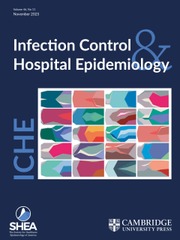Article contents
The Microbiology of Colonization, Including Techniques for Assessing and Measuring Colonization
Published online by Cambridge University Press: 02 January 2015
Abstract
Organisms living on our external and internal body surfaces are the first contact for many potentially pathogenic invaders. Factors that alter this microenvironment include antibiotics, the host immunity, and the various diseases of man and their treatment. Predicting when colonization leads to infection remains an important challenge for every clinician. The maintenance and breakdown of colonization resistance by changes in the native microflora and the body's natural mucosal coating by various extrinsic and intrinsic factors is reviewed in this article. Quantitative culture methods developed to improve the predictive value of a given sampling technique (most notably with bronchoscopy) is presented. Besides improving diagnostic capabilities, quantitative cultures can be used successfully as an epidemiologic tool for some outbreak investigations.
Information
- Type
- Symposium: Nosocomial Colonization
- Information
- Copyright
- Copyright © The Society for Healthcare Epidemiology of America 1996
References
- 14
- Cited by

